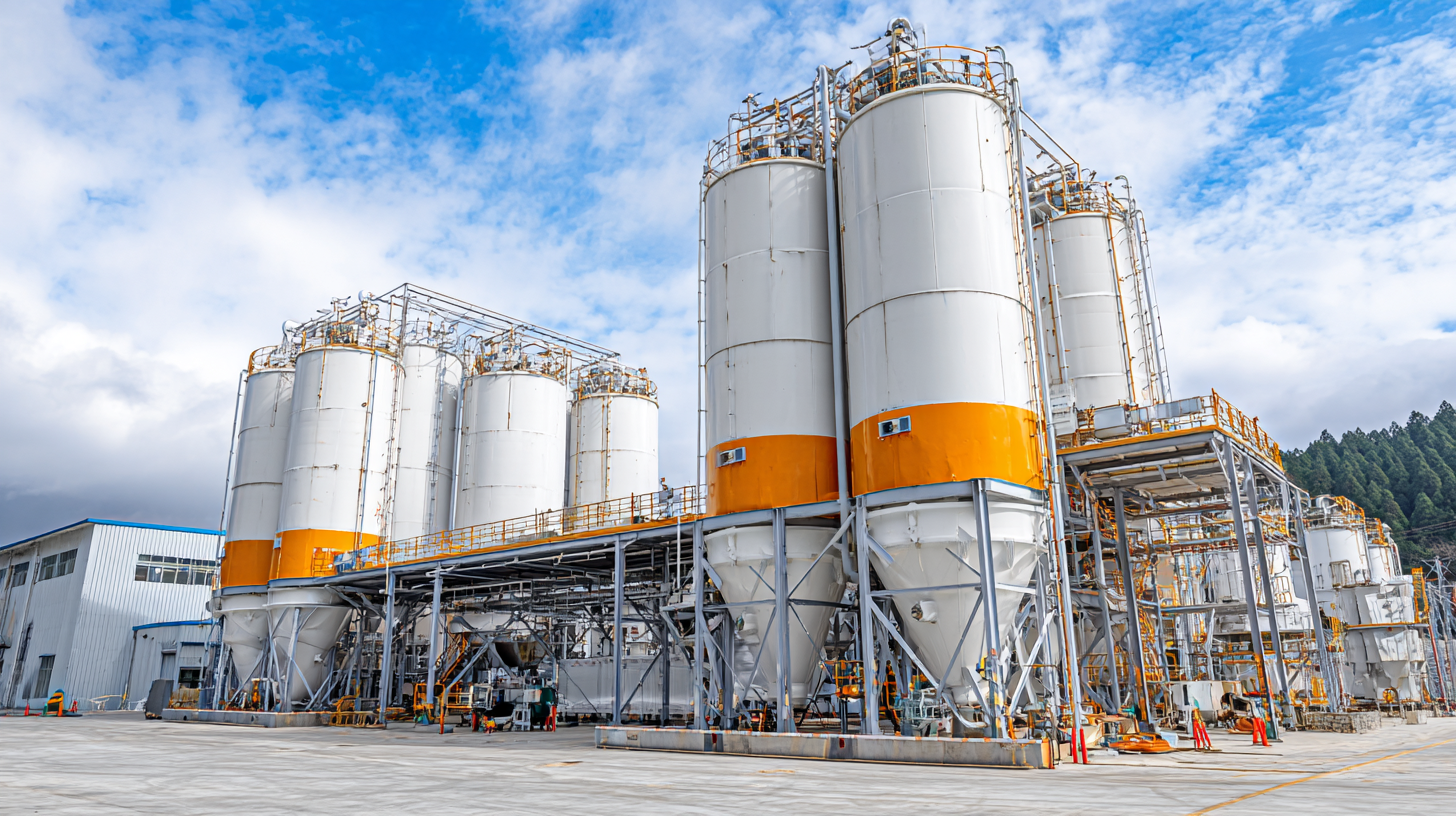Leave Your Message
 Rice drying is a critical post-harvest process that significantly impacts the quality and marketability of rice. According to the Food and Agriculture Organization (FAO), approximately 70 million tons of rice are wasted annually due to improper storage and moisture control. The use of advanced Rice Dryers not only preserves the integrity of the grains but also extends their storage lifespan, potentially reducing wastage by up to 20%. By maintaining optimal moisture levels, these technologies minimize the risk of spoilage and pest infestation, ensuring a stable supply for consumers.
Rice drying is a critical post-harvest process that significantly impacts the quality and marketability of rice. According to the Food and Agriculture Organization (FAO), approximately 70 million tons of rice are wasted annually due to improper storage and moisture control. The use of advanced Rice Dryers not only preserves the integrity of the grains but also extends their storage lifespan, potentially reducing wastage by up to 20%. By maintaining optimal moisture levels, these technologies minimize the risk of spoilage and pest infestation, ensuring a stable supply for consumers.
Furthermore, studies have shown that properly dried rice retains more of its nutritional value and flavor, which is essential for meeting consumer demands and enhancing market competitiveness. As global rice consumption continues to rise, investing in effective drying technologies is more crucial than ever for sustainable agricultural practices.
 Temperature control plays a crucial role in the efficiency of rice dryers, impacting both the quality of the grain and its longevity in storage. The appropriate drying temperature ensures the moisture content of rice is sufficiently reduced, thus preventing the growth of mold and deterioration of quality over time. Recent studies highlight the importance of designing dryers that can maintain optimal temperatures throughout the drying process, as fluctuations can compromise the structural integrity of rice grains, ultimately affecting their storage lifespan.
Temperature control plays a crucial role in the efficiency of rice dryers, impacting both the quality of the grain and its longevity in storage. The appropriate drying temperature ensures the moisture content of rice is sufficiently reduced, thus preventing the growth of mold and deterioration of quality over time. Recent studies highlight the importance of designing dryers that can maintain optimal temperatures throughout the drying process, as fluctuations can compromise the structural integrity of rice grains, ultimately affecting their storage lifespan.
Tips: To enhance drying efficiency, consider utilizing a hybrid solar dryer, which combines renewable energy with multistage dehumidification techniques. These systems not only optimize heat and mass transfer but also enable consistent temperature regulation. Maintaining an ideal packing density of the rice grains during the drying process can further improve drying performance, allowing for even heat distribution and more effective moisture removal.
Moreover, integrating energy-efficient technologies into your drying process can yield significant benefits. Innovative solutions, such as using a desiccant material for moisture absorption, provide a more sustainable method of preserving rice quality. By adopting these advanced drying methods, producers can ensure that their rice not only meets market demands but also retains its nutritional value for extended periods.
Moisture levels are crucial in grain storage, particularly in regions where agriculture is the backbone of the economy, such as sub-Saharan Africa. Effective management of moisture content can significantly enhance the longevity and quality of stored grains like rice, corn, and soybeans. According to research, maintaining an optimal moisture level of around 13-14% for grains can drastically reduce the risk of spoilage and pest infestations, ultimately preserving nutritional value and ensuring food security. In practice, growers need to monitor these levels closely as crops are stored, particularly during seasonal transitions when temperature fluctuations can lead to condensation and increased moisture.
Implementing modern storage technologies can aid farmers in maintaining these essential moisture levels. Real-time monitoring systems allow for immediate adjustments to be made, preventing conditions that favor spoilage. In fact, reports indicate that proactive grain management can lead to better procurement outcomes, as improperly stored grains often face delays and decreased marketability. With developments in storage infrastructure, such as facilities capable of storing millions of bushels, the agricultural sector can ensure that every grain counts, sustaining both local and regional economies while contributing to global food security.
When it comes to maintaining the quality of harvested rice, modern rice dryers play a crucial role. These machines are designed to effectively reduce moisture content, preserving the grain's nutritional value and ensuring a longer storage lifespan. Here are five essential features that define modern rice dryers.
First, precise temperature control is vital for effective drying. Advanced rice dryers come equipped with sensors that monitor and adjust temperatures to prevent overheating, thereby protecting the grain's quality. Additionally, uniform airflow distribution is crucial. This feature ensures that all rice grains receive equal drying, which reduces the risk of spoilage due to moisture pockets.
Another important feature is the energy efficiency of these machines. With rising energy costs, modern rice dryers are designed to minimize power consumption while maximizing drying effectiveness. Moreover, many rice dryers now include data logging capabilities, allowing farmers to track drying conditions and optimize their processes for better results.
Tips: When selecting a rice dryer, consider a model with adjustable settings to accommodate various rice types. Regular maintenance of the dryer will also enhance its lifespan and efficiency, ensuring it remains in optimal working condition for future harvests.
To maximize the storage lifespan of dried rice, proper handling and storage techniques are essential. First, ensure that rice is fully dried before storing it. Moisture content should be below 14% to prevent mold and spoilage. Using a rice dryer can achieve this, allowing for the optimal removal of moisture while preserving the grain’s quality.
Once dried, allow the rice to cool to room temperature to avoid condensation when placed in storage containers.
Selecting the right storage containers is equally important. Airtight containers made of glass or heavy-duty plastic are ideal, as they prevent moisture ingress and pest intrusion. Consider adding oxygen absorbers to further extend the shelf life by minimizing oxidation. It's also beneficial to store rice in a cool, dark place, as exposure to light and heat can degrade the quality over time. Regularly check stored rice for any signs of pests or spoilage; early detection is key to maintaining quality. By following these tips, one can ensure that dried rice remains in excellent condition for an extended period.
Airflow plays a crucial role in the preservation of rice quality during storage. Proper airflow in rice dryers ensures that moisture is uniformly removed from the grains, preventing the growth of mold and harmful bacteria. When rice is dried efficiently, it retains its texture, flavor, and nutritional value, which are essential for both consumers and producers. Insufficient airflow can lead to uneven drying, leaving pockets of moisture that compromise the overall quality and shelf life of the rice.

In addition to moisture removal, controlled airflow helps to reduce the risk of insect infestations. When rice is stored in a well-aired environment, the chances of pests breeding within the grains are significantly minimized. This is particularly important in warmer climates, where high humidity levels can quickly lead to quality degradation. By ensuring that rice dryers maintain optimal airflow, the industry can enhance storage lifespan and deliver high-quality rice to consumers, ultimately supporting food security and sustainability.






